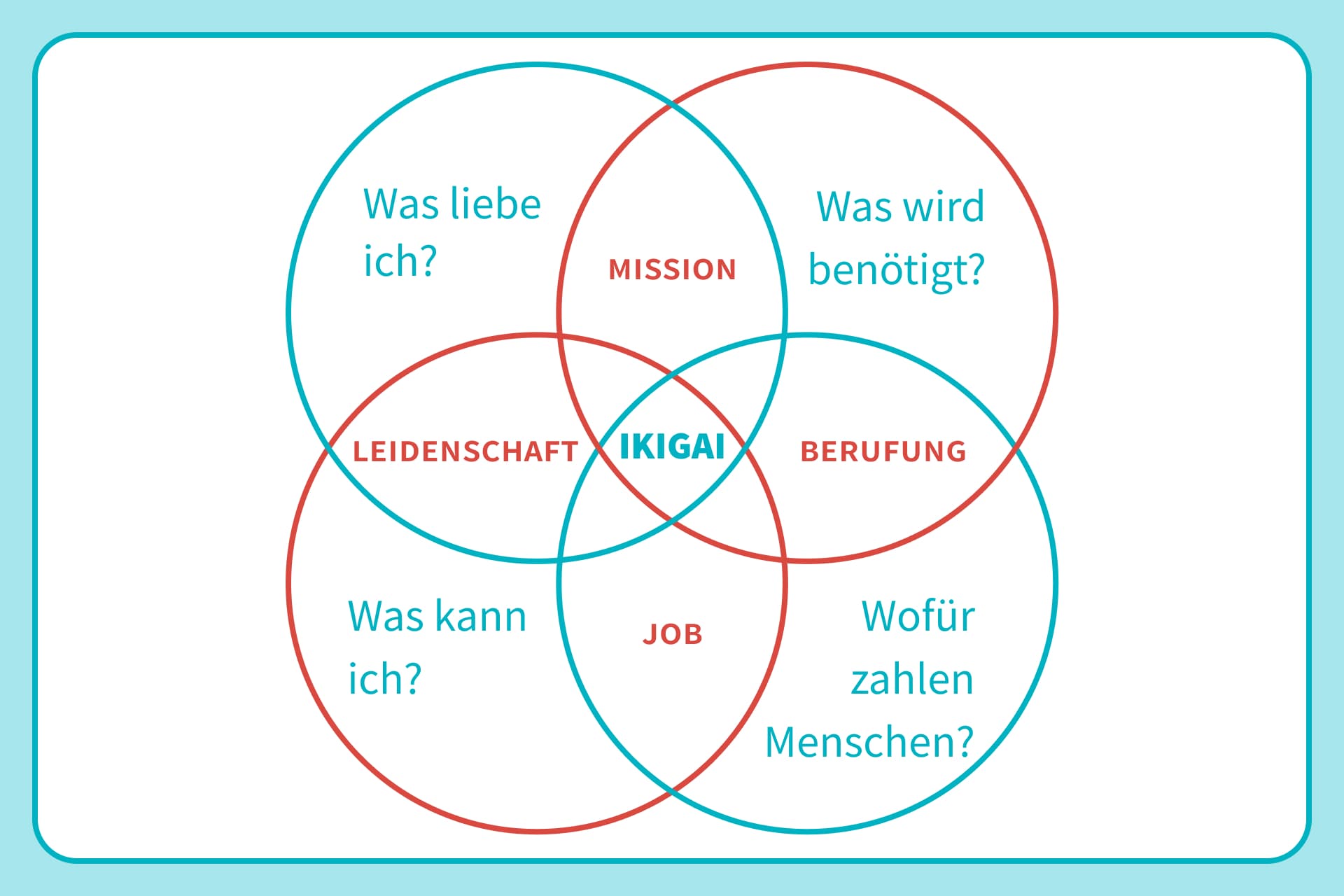Ikigai: What’s worth getting up for in the morning?
November 23, 2022

5 min

“42” is the question regarding the meaning of life in Douglas Adams’ The Hitchhikers Guide To The Galaxy. The answer is exactly as abstract as the question itself, one we’ve all certainly asked ourselves at some point. We can refer to it in different languages as the Sinn des Lebens, Purpose, Ikigai, but the central theme remains consistently the same: a quest for what it is that makes our lives worth living. Or, how the Japanese term Ikigai is sometimes liberally translated: the feeling of finding something that makes getting up in the morning worth it.
Ikigai is formed from the Japanese words iki (life) and gai (worth). In Japan, it’s a philosophy of life with a long tradition. In fact, this philosophy can even be traced back to the 14th century. It is a profound self-exploration, which essentially asks what is it that makes us happy, what makes us want to live our lives, what motivates us each morning to wake up and start the day. Conceptually, Ikigai can be understood as either how to find these elements in your own life, or it can describe the state of already having found one’s own purpose. One of the principal messages of Ikigai emphasizes the importance of finding your own way and not blindly adhering to society’s expectations or its norms. The philosophy also emphasizes the importance of taking time for yourself, living in the here and now, avoiding stress and letting go of negativity. In addition, Ikigai also stands for a mindful approach to self-care and actively pursuing the things which do us good. Things like spending a lot of time outdoors enjoying nature, surrounding yourself with inspiring people, being thankful, remaining curious and active, and always treating yourself and others with respect.
Ikigai & New Work: the Ikigai diagram
Meanwhile, the concept of Ikigai is being well-received in Germany. While the “western” interpretation is inspired by the Japanese philosophy, it is not identical to it. Especially in the modern working world driven by Gen Z, where purpose, work-life balance and self-fulfillment are all highly valued. Gen Z views Ikigai as a method to explore all these things – perhaps to try out another field of work, develop a new business model, or to recognize the “perfect job”. At this point, Marc Winn’s name often comes up. Winn is a business coach and entrepreneur, known for illustrating the concept of Ikigai in the format of a Venn diagram in 2014. The diagram combines Winn’s preceding Purpose Venn diagram (which aims to provide us a simplified overview of our current work situation) with the Ikigai philosophy. Four areas make up the basis of the Ikigai model: passion, mission, profession, vocation. The model is based on four topics relating to work and life which are located in the inner part of the circles, closest to Ikigai, or “life’s purpose”. Here’s a visual depiction of Ikigai:

Being happy: Find your Ikigai with four questions
Ikigai is a philosophical concept and not a magical recipe. Grab a pen and paper, sit down and get ready to know yourself better. Each of the following four questions is based on a distinct area of Ikigai and designed to help you identify your own purpose in life.
The first question is: what do I love? “Make your passion your paycheck” or turning your passion into a profession, is something many people dream of. But first off, you have to know what you’re truly passionate about. Is there something that you already enjoyed doing even as a child? What are the things you can really immerse yourself in? What can you talk about enthusiastically? With which topic or activity can you spread your excitement to those around you? The next question is dedicated to the subject of mission: what does the world need? The feeling of being needed and doing something meaningful gives many people a sense of fulfillment. You can take into consideration all things great and small here, as long as they pertain to identifying which values are truly important to you. You might want to ask yourself: what would I like to change in the world? What would I like to leave the world as a legacy? Is there a problem that I can solve? The third question is focused on your calling, or profession: what am I good at? The Ikigai Venn diagram also concerns itself with identifying your own strengths, with the intention of harnessing them to accomplish your “individual mission”. What have you been educated in? What have you taught yourself? What do you find particularly easy to do? And also: what are you perhaps better at than others? The fourth and final question explores career options: what can I be paid for? A good portion of our lifetime is occupied with paid work, which is why this area of the diagram plays an important role. How can a career be created based on our passion, mission and talent? Can these areas be combined outside of a job to find a job that’s more compatible?
As you’ve probably guessed, involving yourself with the Ikigai philosophy won’t resemble a sprint, but more a longer journey that might even require several attempts. The kind of self-reflection that Ikigai initiates can even be more confusing than enlightening at first. Therefore, it’s important to give yourself enough time and tranquility, and moreover, be prepared to make several attempts and to answer the questions you pose to yourself honestly. Ikigai might then help you come closer to finding your own personal purpose in life.